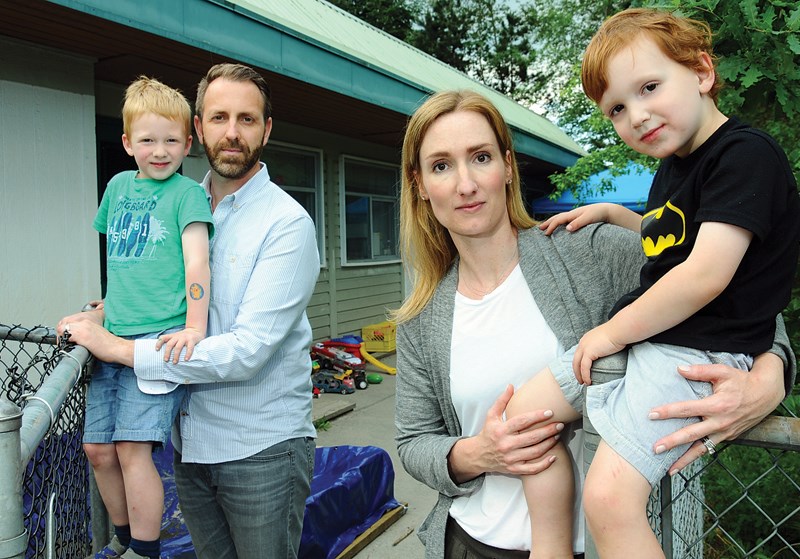There will be more teachers, more classes – several of them in portables – and fewer students in each classroom in schools across the North Shore come September.
The equivalent of 59 more full-time teachers are being hired in North Vancouver, while West Vancouver will hire 15 more teachers.
But the changes that have come with renewed class size and composition limits have also led to a physical space crunch in schools, especially at the elementary level.
Both North Vancouver and West Vancouver school districts have been juggling class lists to ensure they’ll fit into new class size limits under a deal struck between teachers and the province following the teachers’ win last year in Canada’s top court.
The agreement means there will be fewer students in many elementary school classes and fewer special needs students in each classroom. In some schools, the result will be additional classes, while in others the new limits will mean more split grade classes.
Four classes in West Vancouver and six classes in North Vancouver will be taking place in new portables next year.
Increased pressure for space means daycare programs that operate out of schools are also under threat.
Bee Haven Childcare, which operates out of Dorothy Lynas Elementary in North Vancouver – including a before- and after-school care program – has been given notice that it has one year to find a new space outside of the school.
Sarah Small, a parent whose three-year-old son attends the daycare and whose older son is on the waiting list for before-and-after-school care with Bee Haven, said the closure of the daycare at the school will create hardship for many families. “We’re forced to go back out to the community and look for other spots,” she said. “Everywhere has big waiting lists.”
Small said it’s so expensive to live in North Vancouver, both parents in most families have to work. “I don’t know anybody who can leave work at 2:30 in the afternoon five days a week,” she said.
“There’s a lot of families in the same situation as we are.”
Even if the daycare manages to find another suitable space, the change likely means instead of just walking to school, Small will have to drive her kids to daycare farther afield, where they will then be bussed back and forth to school each day.
“That to me is mind boggling,” said Small. “It’s a quality of life issue.”
Louise Warner, owner of Bee Haven, said if she can’t find an alternative space for her daycare, it will impact 18 kids in before- and after-school care and 11 preschool-age children – as well as others still hoping to get in. “My waiting list is huge,” she said. “I have people putting their name on my list for 2020.”
Last year, Top Drawer daycare had to move from Brooksbank Elementary after being told its lease would not be renewed because of classroom space requirements. It is currently operating out of space at Brockton School.
There are 19 child-care services operating out of North Vancouver public schools.
Deneka Michaud, spokeswoman for the North Vancouver School District, acknowledged it’s possible more of those leases may not be renewed in future years if classroom space is at a premium.
“Certainly we understand the concerns from parents. Ideally if we have the space we like to make it available, but our mandate is to provide K to 12 education,” she said. “That is what we need the space for.”
The space crunch is impacting elementary schools more than high schools, said Michaud, partly because “at the high schools there’s a lot more flexibility in how classes can be structured.”
Next school year, portable classrooms will be added to Highlands, Lynn Valley, Ross Road, Brooksbank and Dorothy Lynas schools.
Classroom space is also being created from rooms previously dedicated to English language, learning assistance and an art room at four other elementary schools.
Some schools – including Capilano, Highlands, Queen Mary and Brooksbank – have also been restricted to catchment-area students and their siblings only, she added.
Under the agreement between teachers and the province, maximum class sizes are smaller than what the average size has been in the district – usually by one or two students. In addition, no more than three special needs students can be in each regular classroom.
According to statistics from the Ministry of Education, in North Vancouver last year there were 336 classes with more than four special needs students in them. Of those, 183 classes had seven or more special needs students.
There are currently 662 special needs students in the school district as a whole. Fifteen years ago, when the last class composition limits were in place, there were 401.
Similar juggling of class lists and available space has taken place in West Vancouver.
Teachers will be hired for nine new classes at Bowen Island, Gleneagles, Caulfeild, Pauline Johnson, Irwin Park, Hollyburn, Chartwell and Westcot elementary schools, said Dave Eberwein, assistant superintendent for the West Vancouver School District.
Four portables will help provide those classrooms at Westcot, Irwin Park, Chartwell and West Bay. Three schools – Cedardale, Westcot and Chartwell – will also see minor renovations to convert space previously used for other activities into classrooms.



